« December 2014 | Main | February 2015 »
January 29, 2015
Carl Dreyer: Master of the Movie House

For those who are unaware of the history of this blog, the name is something of a parody on a column written by film historian Herman G. Weinberg for the Canadian magazine, "Take One", titled "Coffee, Brandy and Cigars". A relatively hip, though scholarly monthly, Weinberg was the house curmudgeon, who could be counted on to dismiss the current crop of films, while complaining about the Hollywood philistines who mutilated the eight hour version of Greed. Carl Dreyer was one of the handful of directors Weinberg loved to mention as an example of a great artist all but ignored by those with the power to finance his projects. I'm not sure if Weinberg was unaware of what Dreyer was up to when he wasn't making films, or he just wanted to create a myth about an uncompromising filmmaker forced into an ascetic existence due to the indifference of the money men. At any rate, during the latter part of his life, Carl Th. Dreyer ran a movie theater in Copenhagen, Denmark. And that theater showed (gasp) popular Hollywood movies.
If that's not damning enough, Dreyer also won a Golden Globe. Yeah, him and Pia Zadora. This was back in 1956, with Ordet being one of several films to have been named as Best Foreign Film. Some of the awards back then might raise a few eyebrows, like Love is a Many-Splendored Thing promoting "International Understanding". And Pia Zadora has redeemed herself with several music videos and a very funny performance in John Water's Hairspray. Still, Dreyer's relationship with Hollywood isn't totally antithetical.
Discussion about Dreyer's management of the Dagmar theater mentions some of the more critically acclaimed directors whose films Dreyer chose to present, as well as how Dreyer got to manage a movie theater. But what struck me is that some of the films shown were not always the ones discussed by serious cinephiles of the time.
During the same year as he premiered his own Ordet, Dreyer showed Sam Fuller's Hell and High Water and Jean Negulesco's Three Coins in a Fountain, two color and CinemaScope productions from 20th Century-Fox. Dreyer would seem to hold Martin Ritt in higher esteem than the American critical establishment with the five films shown at the Dagmar. Maybe it was commercial considerations, but Dreyer had no problem booking Paul Wendkos' Gidget or Phil Karlson's The Young Doctors. The man who made Vampyr didn't seem to care for horror movies as a rule, with Robert Wise's The Haunting being the sole exception.
Conspicuous in his absence would be Rudolph Mate. The former cinematographer of The Passion of Joan of Arc and Vampyr had a few films worth seeing when he moved to the director's chair. I wrote about a couple of films Mate made with Glenn Ford that visually shared some of the look of the work Mate did with Dreyer, especially The Green Glove, shot on location in France, with cinematography by Claude Renoir. Surprisingly, Joe Pevney makes it on this list with Cash McCall, and admittedly, Natalie Wood looks great in that silly film.
That there are a handful of films from Charles Walters may be enough proof that far from being a snob about cinema, Carl Dreyer had no problem with films that might not have aspired to be art, but were, without argument, solid entertainment.
Posted by Peter Nellhaus at 07:52 AM
January 27, 2015
Duane Michals: The Man who Invented Himself

Camille Guichard - 2013
Alive Mind Cinema Region 1 DVD
What I find interesting in the past few years is that what is categorized as a documentary has taken on various forms, all veering away from such traditional notions of chronology, revealing of facts, or any attempt at objectivity. A good part of Guichard's film takes its visual queues from Michal's photography, so what we are looking at are glimpses of dreams and imaginings.
Michals discusses photography as being a reflection. What are first seen are portraits of celebrities, most easily recognizable, and within the context of style and subject, relatively traditional. Most of Michals' photographs, the more personal work, plays with light, is often sexually charged, and often makes use of just a portion of a body, or bodies. Some of these photos are parts of dream-like narratives.

Filmed not long after the photographer turned eighty, Michals comes off as a child in an octogenarian's body, giving voices to various props like a stuffed bird or a model head, playing with a bowler hat in tribute to his time meeting Rene Magritte in Brussels. The closest to anything biographical are references to his childhood in McKeesport, Pennsylvania. Michals does some discussion of his work as a photographer who originally was intending to be a painter, who finds his visual inspiration from other painters. In terms of becoming a photographer, Michals did invent himself, describing his transition from painter and graphic designer as being "self-taught".
I've not been able to find much about Camille Guichard. His other available work as a director was a documentary on sculptor Louise Bourgeois. In a description of what was intended while production was still in progress, Guichard's aim was to create a "kaleidoscope of photographic sequences". This posting by Shelley Rice discusses some of the making of the film, making it clear that what we see is the result of an active collaboration between the filmmakers and their subject.
The playfulness of Michals does get pushed when a photographic exhibit is created for the benefit of the wildlife that lives near Michals' Vermont home. For those with either a vague knowledge of Michals, or no knowledge at all, some of what is seen will be confusing, without context or any kind of explanation. While their relationships to Michals is usually assumed by their function, be it model or photographer's assistant, various people appear and disappear without any explanation, some just seeming to act as foils for Michals' story-telling. Again, neither Guichard nor Michals has any interest in the more traditional or expected demands of documentary. Hopefully, this will not dissuade those unfamiliar with Duane Michals from taking a look at his life and work.

Posted by Peter Nellhaus at 06:48 AM
January 25, 2015
Coffee Break

Elsebeth Steentoft and Ulrich Thomsen in In a Better World (Susanne Bier - 2010)
Posted by Peter Nellhaus at 09:05 AM
January 22, 2015
R100
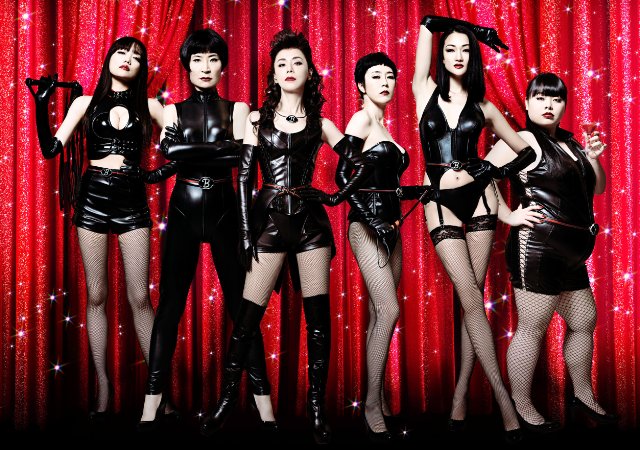
Hitoshi Matsumoto - 2013
Drafthouse Films
Not that Hitoshi Matsumoto's film is in anyways a more serious look at sadomasochism, but with the almost monochromatic look as well as the more transgressive activity depicted both visually and thematically go beyond the "Shades of Gray" some film viewers are anticipating. The basic setup has a salaryman, Takafumi, a furniture salesman at a large department store, who has contracted for a year of encounters with various dominatrixes who appear at random to inflict beatings, whippings and kicking in high heeled shoes. There are no "safe" words, and no rules other than that the contract is irrevocable.
Takafumi's pleasure is indicated by a ripple effect that is seen behind his head when the sessions are over. Takafumi's wife is in a coma, and there is no hope for her to regain consciousness. Matsumoto doesn't state anything outright, but with Takafumi's life outside of work limited to his father-in-law and his eight year old son, one might give this situation a Freudian interpretation of some kind of survivor's guilt mixed with relationships with women that sublimate sexual intimacy.

Equally at random are scenes that take place at a screening, with R100 as a film in progress. Studio executives step out of the screening room between reels to discuss what is going on in the film, supposedly the work of a one-hundred year old director who looks suspiciously like Suzuki Seijun. These scenes are the funniest part of the film, especially when the director's spokesman explains that per the director, viewers have to be 100 years old to understand R100, hence the film's title. This, of course, infuriates one of the execs who notes that there aren't too many 100 year olds and how many would even go to a movie theater? (In case you're wondering, the real Suzuki Seijun is currently alive and well at age 91.)
There are a couple of moments when the characters think they are about to be caught in an earthquake. In one of the screening room scenes, it is explained that the director (never named) is using the hint of earthquakes as some kind of symbolism regarding contemporary Japan. I'm not sure what kind of point Matsumoto has in mind here, if he is really trying to make some kind of satiric statement about the Japanese male, or if he just had a comic premise that he tried to push as far as possible. Matsumoto even addresses some of the narrative inconsistencies and implausible moments that make up this odd narrative.
For some of us, there is the pleasure of seeing beautiful women who appear to be clothed by Agent Provocacteur. Among these is the "Queen of Violence" with her brutal roundhouse kicks as part of her date with Takafumi, and most hilariously, the "Destructive Queen" who flattens Takafumi's sushi with her palm, bewildering the chef and the two restaurant patrons who witness the silent Takafumi scooping up the remains, to eat with his hands. What may be more shocking for some viewers is to know that in its home turf of Japan, R100 is a Warner Brothers movie. Coincidentally, like a classic Warner Brothers movie that tested both the viewers' and the studio's limits regarding sex and violence, Takafumi has a love for the music by Beethoven.

Posted by Peter Nellhaus at 06:16 AM
January 20, 2015
The Pirates

Haejeok: Badaro Gan Sanjeok
Lee Seok-hoon - 2014
Well Go USA Entertainment Region 1 DVD
Without apology, I happen to like pirate movies, a once viable genre that eventually disappeared about fifty years ago. Even better are movies with female pirates, not that there are there are more than a handful, with one of my favorites being Jacques Tourneur's Anne of the Indies. While pirate captain Yeo-wo shares the narrative with other characters, Son Ye-jin's action set pieces set her apart from past actresses who at most swung from the ropes, and briefly waved swords.
Some of the finer historical points may be lost, but the film takes place in 1388 during the foundation of the Joseon dynasty. A royal seal from China is lost at sea, swallowed by a whale. Several rival groups are after the whale. Among those in search of the whale, are Yeo-wo's former captain, Soma, renouncing his piracy for amnesty with the new government, a mountain bandit names Crazy Tiger who is totally ignorant of sailing or sea life, as well as Yeo-wo, who has a past link with the whale. One of the better visual gags is of Crazy Tiger's boat speeding across the ocean, pulled by the unseen shark, observed by Soma who was assured that he had the fastest seafaring vessel.
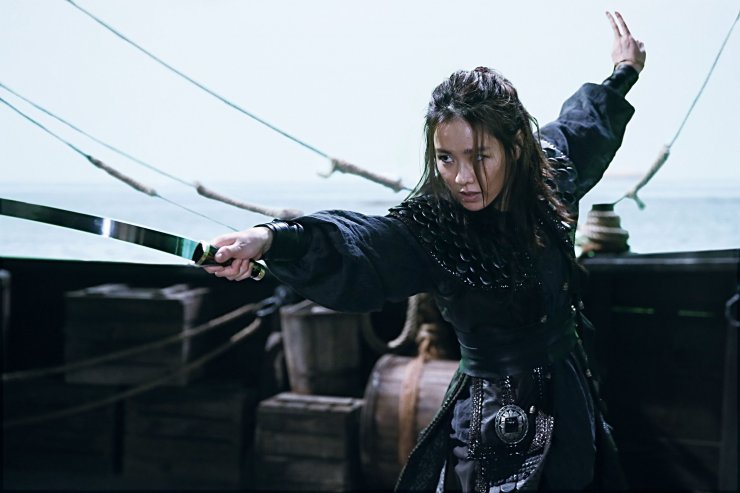
In ways both expected and unexpected, Lee Seok-hoon has been inspired by Steven Spielberg. The story, stripped down, of course recalls Moby Dick, but also there is a bit of that most famous redo, Jaws, especially when the mountain bandits encounter a shark for the first time, sailing in a very small boat. More elaborate is a scene that takes the runaway ferris wheel from 1941 and amplifies it, with a giant, runaway wheel destroying a village, while at the same time, Yeo-wo flees pursuing soldiers by hurtling down and elaborate course of water slides. While going down the slide Yeo-wo breaks apart portions behind her, contributing to the scene of massive, comic destruction. Lee also recalls other films, with Yeo-wo and Crazy Tiger shackled together and on the run as in The 39 Steps, and a scene with the two comparing scars was certainly inspired by Lethal Weapon 3.
Maybe it was because her role was the most physically demanding, but Son Ye-jin won as Best Actress for the most recent Grand Bell awards, South Korea's equivalent to the Oscars. Winning Best Supporting Actor was Yu He-jin in a mostly comic performance as a seasick pirate who takes off for land, joining Crazy Tiger's gang where he is constantly promoted or demoted, depending on the whims of his boss.
Posted by Peter Nellhaus at 07:20 AM
January 18, 2015
Coffee Break

Elias Koteas and Kathryn Erbe in 3 Backyards (Eric Mendelsohn - 2010)
Posted by Peter Nellhaus at 08:58 AM
January 15, 2015
Screaming Mimi

Gerd Oswald - 1958
Sony Pictures Choice Collection DVD
In most of her screen appearances, Anita Ekberg would be a character, sometimes of herself. To paraphrase Andrew Sarris on the similarly endowed Jayne Mansfield, if she hadn't already existed, she would have had to have been invented. More than any of the European "bombshells" of the Fifties and early Sixties that simultaneously exploited their sexuality and were exploited themselves, Ekberg always seemed a bit bigger than life. Her face was broader, her breasts appeared bigger, her thighs, meatier. How it came to pass that her two films that gave her roles of substance were both directed by Gerd Oswald is unknown to me, but Ekberg's recent death was motivation for me to see Screaming Mimi again.
There is some resemblance to Fredric Brown's novel, but much of it is tossed aside. In the novel, Yolanda is first seen in a state of undress. The series of murders is reduced to one unsolved case. Most significantly eliminated is the question of what was witnessed, who was the murderer, and who was the victim? One might argue that in relation to the themes presented by Brown, Dario Argento's unofficial remake, The Bird with Crystal Plumage is the more faithful filmic recreation.
Oswald plays with the idea of Anita Ekberg as a mostly unattainable sex object. In the first shot, Ekberg emerges from the ocean, maybe not Venus in the shell, but close enough. Her one piece bathing suit seems a size too small, revealing a little extra flesh both front and rear. Nudity could only be suggested, but for its time, imagining Anita Ekberg nude in the outdoor shower was probably good enough for male audience members.
The fantasy of sex, more specifically with Anita Ekberg as an object of fantasy, is played with when she performs her nightclub act. Ekberg's body is recognizable even in shadow, and there are several shots where she is only seen in shadow. The nightclub performance has Yolanda dancing with chains that she eventually breaks, suggesting that she is neither to be thought of as a slave or someone who could be kept. The film ends with the recognition that Yolanda is schizophrenic, and unaware of her own reality. One might interpret Screaming Mimi as being something of a parable about Hollywood, about a woman who invokes interest due to her strong sexual presence, of men fighting over her, confusing what they think is best for her with their own respective self-interest, and the confusion these men have between the image of Yolanda, whether it's the image they create, or the image Yolanda chooses to project.
Can a film be both a critique of the "male gaze" as C. Jerry Kutner has written, and at the same time an act of self knowledge? That first low angle shot of Anita Ekberg's posterior suggests that the film plays it both ways, which is OK with me.
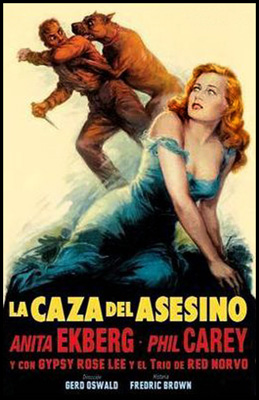
Posted by Peter Nellhaus at 08:53 AM
January 13, 2015
Once Upon a Time in Shanghai

E Zhan
Wong Ching-po - 2014
Well Go USA Region 1 DVD
It's been a while since I've seen any films by Wong Ching-po. And even if Wong relies on style over substance, I don't mind if only because too many films seen recently lack anything resembling a visual style. I don't know who made the decision to have Once Upon a Time in Shanghai be presented in a digitally created monochrome, with bits of color tinting on a couple of details, but I liked it. And if the influence was more Sin City than, say, Lady from Shanghai, so be it. Call it "kung fu noir".
The film takes place in 1930. And similar to a couple more famous, and epic, films with the "Once Upon a Time" title, Shanghai is presented as a land of promise for some young men from a mainland Chinese village. Ma Yongzhen wears a turquoise bracelet given to him by his mother, a reminder to be careful about using his lethal right fist. Not that wearing the bracelet keeps Yongzhen from getting into any fights, but it does keep him from killing anyone until later in the film.

Yongzhen learns how Shanghai is controlled by four gang leaders, with half of Shanghai controlled by the upstart Long Qi. There's also business dealings with the Japanese with opium shipped in the guise of tea leaves. After Qi and Yongzhen test each other's martial arts skills, Qi hires Yongzhen to work for him in his nightclub as a waiter. Even though Yongzhen is aware that he can easily follow Qi using his fighting skills, he chooses to live honestly, in modest circumstances. Even though he is a gangster, Qi even has his own code of honor, choosing not to go into business with the Japanese, aware as he is of their plans for eventual takeover.
Wong's film is a loose remake of Boxer from Shantung (1972), with the older film's star Chen Kuan-tai appearing here as one of the older gang leaders. Sammo Hung is the big name here, but his part is really a supporting role, as the chief of the various peasants and laborers who eke out marginal lives, away from the bright lights. As Yongzhen, Philip Ng does possess some resemblance to Bruce Lee, with his lithe body, hair combed over his forehead, and boyish grin that makes him look much younger than his 37 years. Andy On is equal to Ng in martial arts moves, though his forced laugh in his early scenes is grating.
The "Making of" supplement gives a hint of what Once Upon a Time in Shanghai might have looked like in color. Not so coincidentally, another variation on the story, with a bit more effort in recreating the era, is the John Woo produced Blood Brothers, with musical numbers also taking place in the Paradise Club. If past history is any indication, Wong Ching-po's film will hardly be the last version we will see of this story.

Posted by Peter Nellhaus at 07:30 AM
January 11, 2015
Coffee Break

Jada Pinkett Smith and Don Cheadle in Reign Over Me (Mike Binder - 2007)
Posted by Peter Nellhaus at 08:17 AM
January 08, 2015
Finding Fela

Alex Gibney - 2014
Kino Lorber BD Region A
It's been about thirty years so my memories about this are a bit fuzzy, but my introduction to Fela Kuti took place at Denver's Film Festival. I handled the physical presentation of 3/4 inch video tapes of Kuti in concert. This was somewhere around the time that Talking Head's album, "Remain in Light", came out, and there were several artists incorporating African music into rock music, the genre that was dubbed Afrobeat. Since the tapes were shown at the theaters in the Tivoli 12 multiplex, the walls didn't do too much to prevent the music from bleeding into the adjacent theaters. If you really wanted to enjoy Kuti's music, it was best to play it reasonably loud.
Alex Gibney's documentary might actually work best for those with some familiarity with Kuti, rather than those encountering his music for the first time. Gibney cuts between some chronology of Kuti's life, the real talking heads, people who knew Kuti over the years, and choreographer-director Bill T. Jones' efforts to bring a musical about Kuti to the Broadway stage.
For those familiar with Gibney's past work as documentarian, Kuti's life and music is as politically charged as any of Gibney's past subjects. The film is partially a history of Nigeria, primarily its post-colonial history, given to a succession of dictators, and an oil based economy that has favored a select handful. Kuti was the son of a nationally known Protestant minister and educator, and a feminist mother. Not mentioned in the film are that Kuti has two brothers, bother medical doctors, or that he is first cousin to the Nobel Prize winning author, Wole Soyinka.
There is some comparison of Kuti with Bob Marley, in that both used the popular music native to their respective countries to address social issues. Also, both charismatic men had several "wives" simultaneously, Kuti going so far as to marry twenty-seven women at once. As a reaction to the lack of real democracy in Nigeria, Kuti and his large entourage of musicians, dancers and support lived in a compound named the Kalakuta Republic, for Kuti, an independent state within Nigeria.
Gibney incorporates a section of the 1982 documentary, Music is a Weapon, in which Kuti shows off the various scars received following his arrest and imprisonment following the release of "Zombie", an album containing songs critical of the Nigerian military. There are also excerpts of Kuti and his ensembles in concert, though not enough of them, as well as excerpts from the Broadway show.
I'm not sure if Fela Kuti is really "found" here. The various parts give hints regarding the life, music, politics and contradictions, with some discussion of his musical influence. There is a sense, for me, of incompleteness. Perhaps the inclusion of Jones and his staged tribute may have been an attempt to make Kuti relevant almost two decades after his death. For myself, the best way to find Fela is to let the music speak (or sing) for itself.
Posted by Peter Nellhaus at 06:42 AM
January 06, 2015
The Claire Sinclair Show

Nico B - 2014
Cult Epics Region 0 DVD
Until this DVD found its way to my mailbox, I had never heard of Claire Sinclair, or known of the existence of the Erotica Channel, apparently one of the many channels found on YouTube. As a result of a couple of serendipitous events, catching the eye first of pin-up artist Olivia De Berardinis, leading to an introduction to Hugh Hefner, Sinclair became the 2011 Playmate of the Year. Sinclair interviews herself via cross cutting between two sides of the stage, with each version of herself distinguished with a change of clothing and make-up. Some shots of Sinclair nude indicate that she is, convincingly, abundantly all natural.

That in itself wouldn't be enough incentive to check out this disc, but an interview with Bunny Yeager was cause to take a look. As it turned out, what is documented here is a last interview with Yeager and what is listed as her last shoot, with Sinclair as her subject. If the name of Bunny Yeager is unfamiliar, most would know of her most famous muse, Bettie Page. The most commonly reproduced photos of Page were those shot by Yeager. Sinclair does her darndest to be a second Bettie Page, but doesn't have Page's disarming smile that transformed tawdry cheesecake into not quite innocent fun. What might be said of Sinclair is that she appears to be smart enough to know how to make the most of her fame, and not find herself in the kind of precarious financial position Page was in after she stopped modeling, or discovered that others, much later, were making money from her name.
Yeager, who died last May at age 85, deserves mention as a pioneer. A former pin-up model herself, Yeager found lasting fame behind the camera, not only as one of the first models to become a photographer, but with her niche of gorgeous women in various states of undress. Amazingly, the collaboration with Page only lasted one year, 1954. Yeager discusses how Page wore costumes designed by Yeager, and how she made her models feel comfortable in front of the camera.
Yeager mentions photographing Maria Stinger, dubbed the "Marilyn Monroe of Miami" due her close resemblance to the actress. Further investigation shows that a deeper interview would have been fascinating, as Sammy Davis, Jr. acted as an photographic assistant to Yeager in 1955, and also did the iconic photo of Ursula Andress in the white bikini, undoubtedly helping sell tickets to a public about to be introduced to a character named James Bond.
Most of the shots of Bunny Yeager photographing Claire Sinclair, concentrate on Sinclair, which I guess is fitting since it is her show. We do see some shots of Yeager operating her camera. What I would have liked is if the soundtrack, a variation of a theme by Bill Haley, had been dispensed with, and instead, we would have heard Yeager coaching Sinclair on her poses, as well as directing how lighting would be used. Sure, the cheesecake can often be delicious, but I want to know about this particular chef's recipe.

Posted by Peter Nellhaus at 06:38 AM
January 04, 2015
Coffee Break

Hugo Blanco and Paula Martel in The Sadistic Baron Von Klaus (Jesus Franco - 1962)
Posted by Peter Nellhaus at 06:05 AM
January 01, 2015
Honey
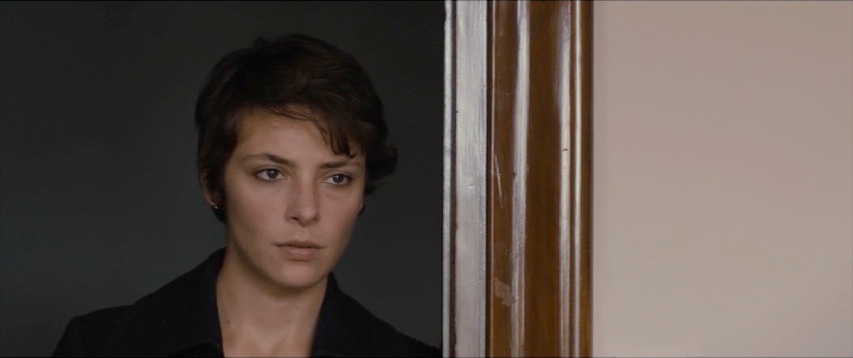
Miele
Valeria Golino - 2013
Kino Lorber Region 1 DVD
I don't know if there is an Italian equivalent to the expression, "to die like a dog", but that is what happens to the people who choose suicide rather than continuing a painful existence with a terminal illness. These deaths are made possible by Irene, a young woman known to her customers as Honey, who provides an illegal barbiturate purchased in Mexico, sold as a veterinary product.
Valeria Golino's film follows Irene in her routine of pretending to be a college student, involved with a married man, her flights between Mexico and Italy, and her dispensing of her services. Irene works on behalf of an unseen arranger, and sees herself as providing a service that has its own rules and ethics. Things are upended when it is revealed that one of the clients is not ill at all, but is considering suicide as a reaction to his own loss of interest in the world. Much of the film follows the conflict between the client, Grimaldi, and Irene, and the relationship, an odd and fragile kind of friendship that follows.
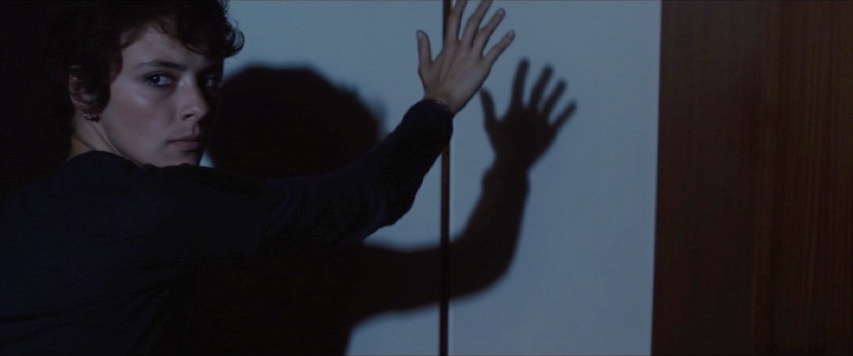
Golino isn't interested in debating the morality or validity of what Irene does from a greater, social standpoint, but is instead interested in the questions from a strictly personal point of view. The film then is not about the right or wrong of assisted suicides, but about Irene's steps to confront the ambiguities in her life.
As a filmmaker, Golino uses lots of close-ups of Jasmine Trinca's face. Mostly, these are full frame shots, sometimes using shadows, but also partial shots of Trinca's face, as well as frequent use of negative space. I am not sure if this was intended to provide a visual correlation to the ambiguities in Irene's live, but her appearance is subject question, especially when she strolls around a Mexican border town in jeans and a short sleeve shirt, neither clearly male nor female.
The idea of death as a form of travel, of going to a different or better place, is echoed in shots of a bridge, as well as planes flying in the background of shots of Irene. Golino also uses shadows extensively. Irene keeps herself in motion, perhaps an unconscious act to ward off death, scuba diving and especially bicycling. There is symbolism, certainly, but it is deftly integrated within the narrative structure.
Music is also key, with the music being completely diegetic, be it the rock music Irene listens to on her earphones, to the music the clients choose to hear during their final moments. The songs range from Talking Heads, Thom Yorke, and The Shins to Bach and Italian pop singer Marino Marini. Not official, but a soundtrack album of sorts can by found at Youtube for now.
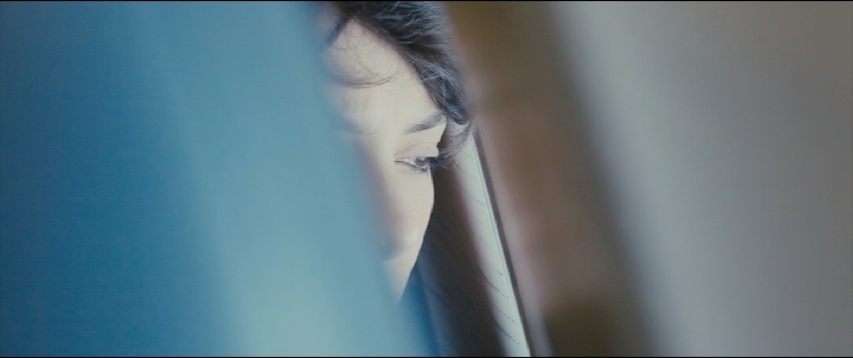
Posted by Peter Nellhaus at 06:34 AM
